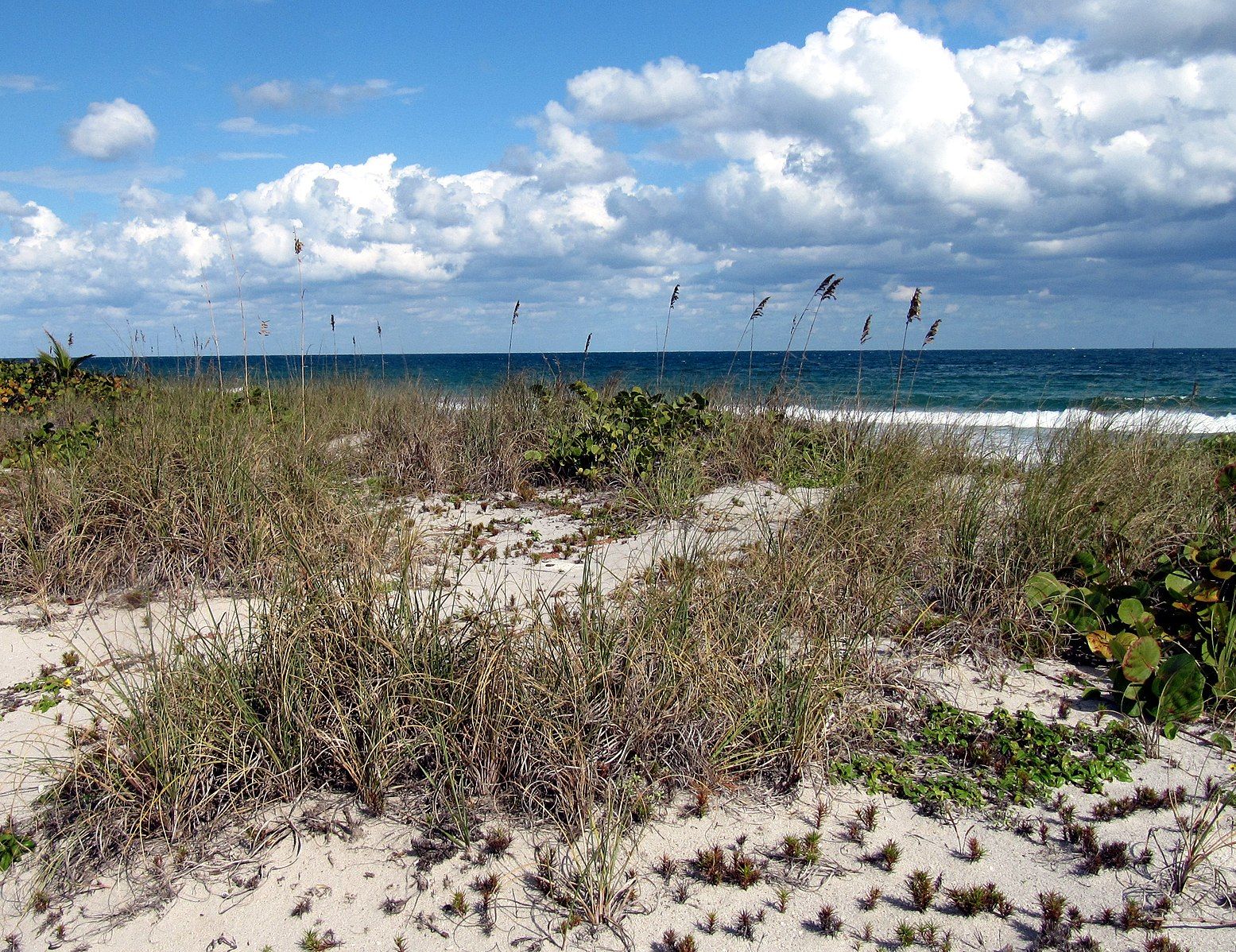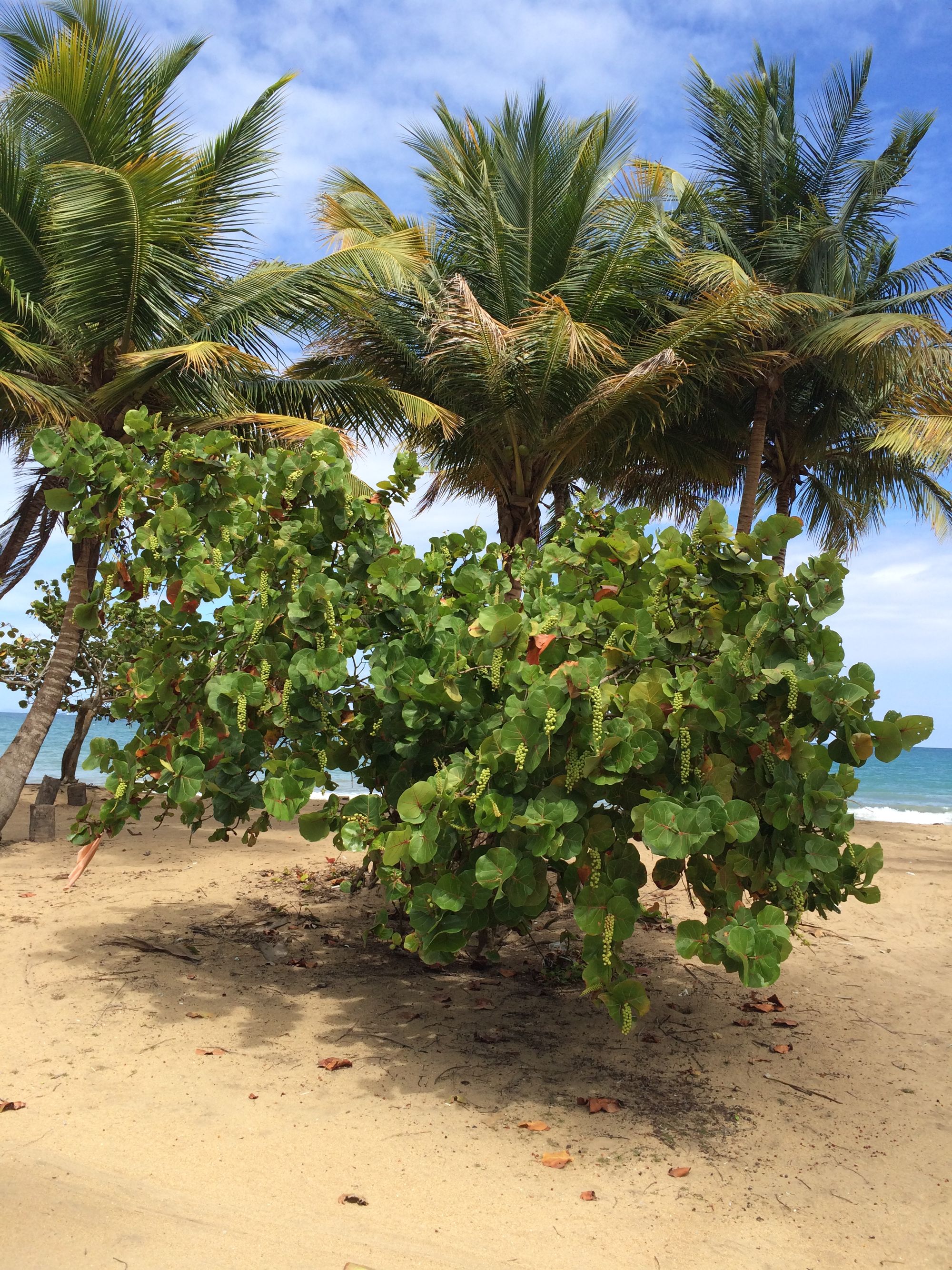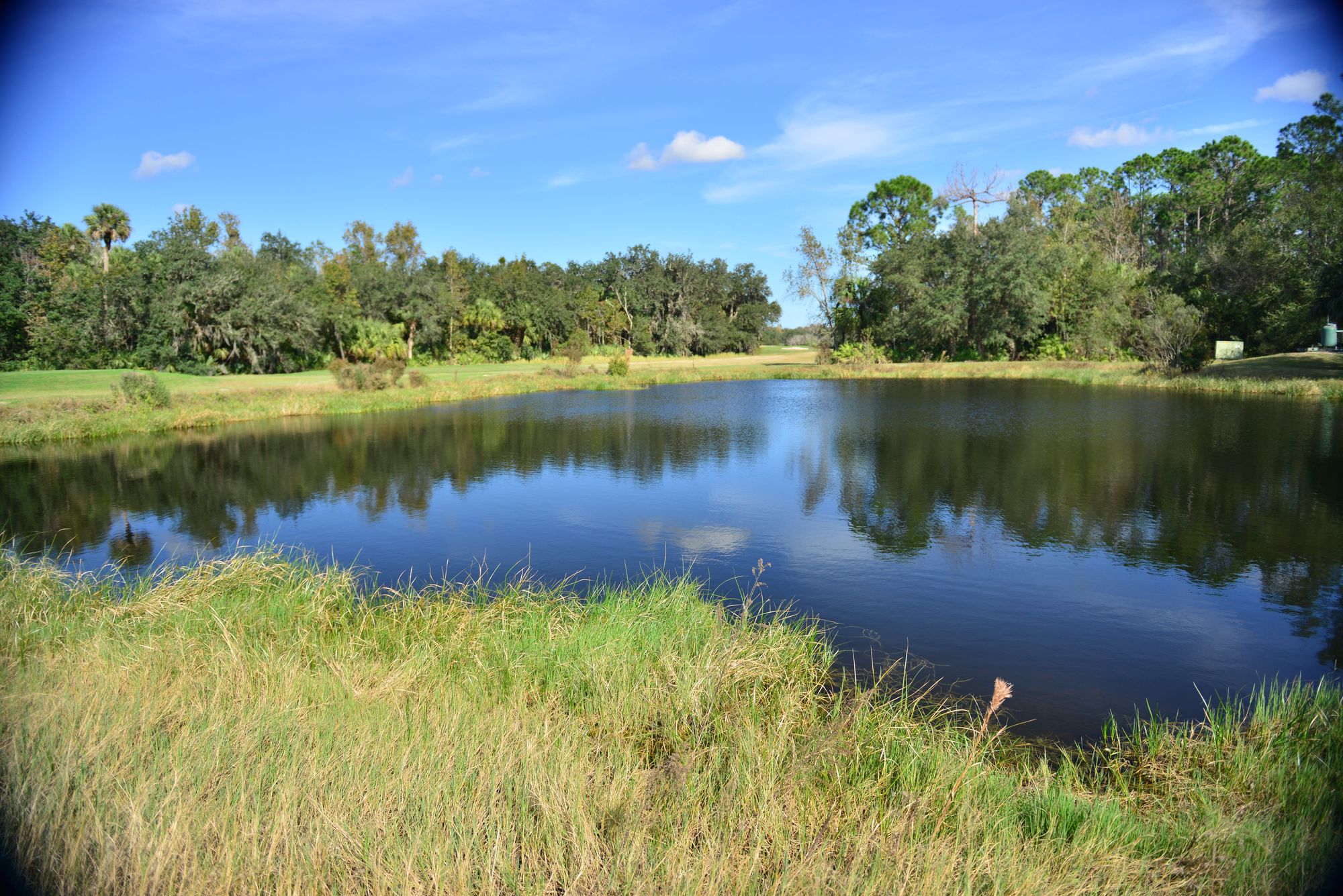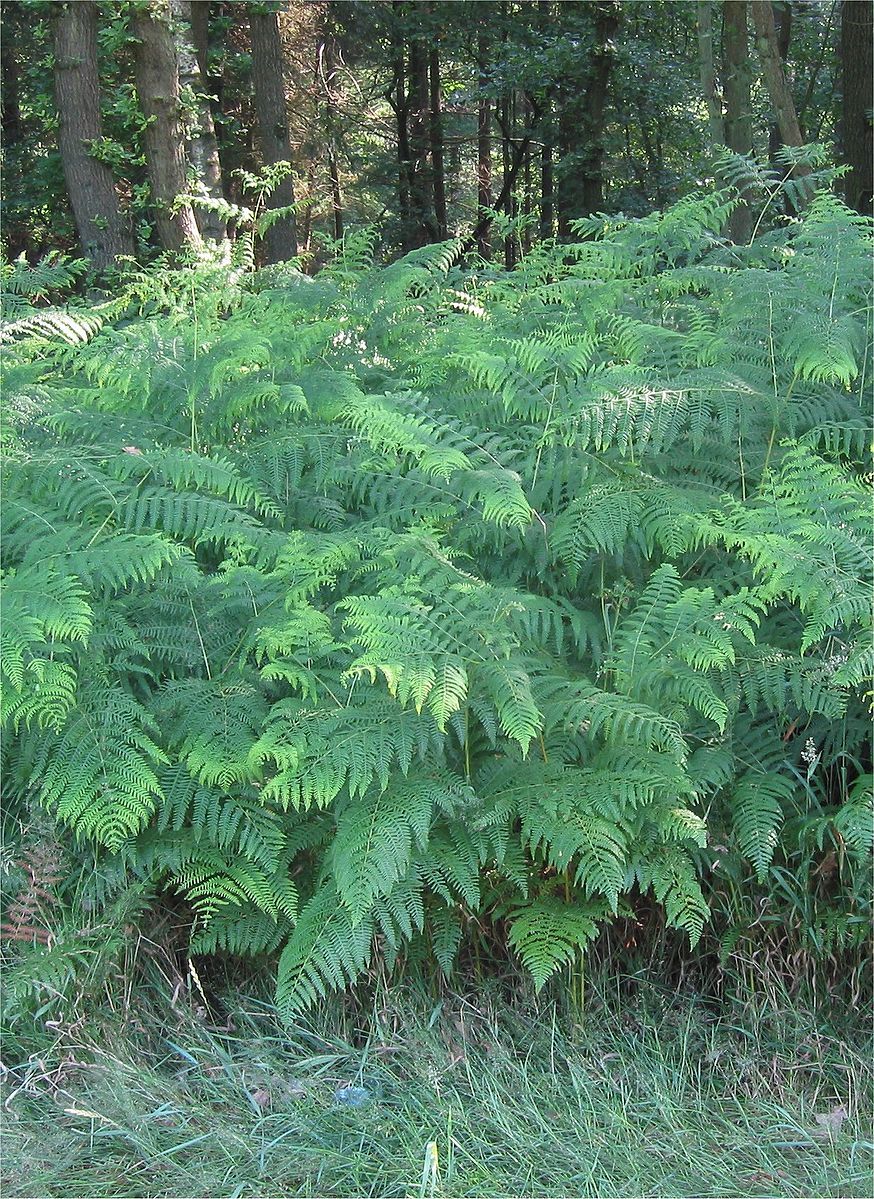
Last time, we looked at the effects of hurricanes on various types of Florida trees. However, trees are only a fraction of the many different species of plants that make their home here. Trees are big and memorable, and can cause a lot of damage when they come down in a storm, but they’re only a small piece of the proverbial plant puzzle.
That said, it would be ridiculous to try and give even a remotely comprehensive breakdown of smaller plants and the impact of a hurricane on them (we have approximately 4,700 different species of native plants just in Florida). Instead we’ll be looking at several major ecosystems, moving inland as we go, and some of the more interesting plants encountered in each of them.
Beach Dunes
The first plant ecosystem that gets hit by a hurricane is the beach, specifically the coastal dunes. A dune is defined as a landform composed of wind- or water-driven sand, usually in the form of a mound or hill. Coastal dunes form because windblown sand accumulates against vegetation, eventually building up in height.
Of course, this ecosystem is a harsh one for plant life. Most plants do not take well to high salt concentrations. This is because water diffuses from areas of low solute concentration to areas of high concentration. If placed in salt water, the water in a plant’s cells will diffuse out and the cells will shrivel. Even if they are not submerged, coastal plants are still subjected to increased salt levels due to sea spray.
These plants have developed a variety of strategies for dealing with this hardship. However, most of them involve variations on either exclusion (keeping the salt out) or secretion (removing the salt that comes in). In this way, they are able to withstand the normal rigors of their environment and contend with the increased salinity from storm surge. We’ll look at two dune species here. The first one is crucial in dune formation.

Sea oats, Uniola paniculata, is one of the most important species of grasses in North America. It can be found on the Atlantic Coast from New Jersey all the way to Florida and along the Gulf of Mexico from Florida to the Yucatan peninsula. When I mentioned how dunes are formed above, this plant is one of those that will readily trap sand and promote dune growth. Their root system is extensive, growing both horizontally along the surface and deep underground. This helps stabilize the plant from hurricane winds and the force of storm surge waters.
While it can’t survive prolonged submersion, storm surge does not tend to do this and sea oats tend to grow in soil that drains quickly and easily. The main threat for sea oats is not the water, but the potential erosion that it causes. The extent of dune erosion caused by a hurricane will vary based on its strength, as well as the overall health of each dune system. Dunes that are already facing major urban encroachment and regular erosion will be more heavily impacted.
Because of the importance of dunes in mitigating hurricane damage, sea oats are a protected species in several states, including Florida. The second beach species we’ll look at is also protected by the same Florida statute.

Seagrape, Coccoloba uvifera, is another fascinating plant, for a variety of reasons. It gets its common name because of the resemblance of its fruit to grapes (Vitis spp.), though the two aren’t closely related. The fruits are edible and can be made into jelly or jam (or fermented into ‘seagrape wine’). Furthermore, much like one of my favorite flowers, the bougainvillea, its form is somewhat dependent on the manner in which it is cultivated and maintained. It can take the shape of a tree, but also appear more low-lying, like a bush or shrub.
While sea oats are important for dune construction, seagrape acts more as a stabilizing structure, reducing erosion of already established dunes. It can even act as a natural light barrier between nesting sea turtles and nearby small buildings, reducing the potential for distraction and disorientation. It is not as widely distributed because it is cold sensitive.
As a coastal plant, seagrape is salt tolerant and able to withstand brief inundation from storm surge. It is somewhat wind resistant, though it is more susceptible to damage than other more low-lying plants and it is also vulnerable to erosion. However, this species is incredibly resilient. As long as the root remains intact, it can sprout back quickly from hurricane damage.
Freshwater Systems
Wetlands of all types are important ecosystems, so the effects of hurricanes on wetland plants is something important to consider. Extensive storm surge, like what we experienced during Hurricane Ian, can drive seawater far up rivers and even into connecting ponds and lakes. The plants there are usually able to deal with flood conditions much better than their dune counterparts, but they unfortunately are not nearly as able to handle the salt influx.
One very important category in this ecosystem is known as ‘littoral’ plants. While the exact definition of littoral will vary based on the field of study, it can be considered as the area of a body of water near the shore. This shallow water vegetation provides key habitat for fish and aquatic invertebrates (and therefore also for their predators). Examples include bulrush, Scirpus spp., and spikerush, Eleocharis spp., which are both actually sedges (if you want to know the difference, there’s a neat little rhyme: sedges have edges, rushes are round, grasses have nodes all the way to the ground). You can see the littoral plants in a ring around a pond’s edge below.

These plants don’t care much about wind or flooding, but saltwater inundation can kill them off, especially if the overall water salinity does not quickly return to normal (less than 500ppm for a true freshwater system). I have personally witnessed the vast difference in the effects of saltwater inundation from Ian. My own little pond outside my window is not connected to or even close to any river system, so it did not receive any storm surge water. The littoral plants there are thriving and I have seen increased wading bird activity in recent months. In comparison, there are other ponds that I frequent that are right next to the Imperial river, a major waterway. All of the plants on the edges of these ponds have died. Salinity testing still indicates high salt concentrations in the water there.
The adverse effects on this type of plant can have a cascading effect on the wildlife that rely on it. We’ll be revisiting this connection later on in the series.
Uplands
We’ve previously discussed a few upland tree species, like the live oak and the slash pine, but there are plenty of smaller upland plants to consider as well. I’ve discussed the coontie and the saw palmetto before, so let’s look at something else, instead.

This is the bracken fern, Pteridium aquilinum. You’ve probably seen it before, it’s found throughout the northern hemisphere and is one of the most widely distributed ferns. Much like the saw palmetto and the coontie, it doesn’t like to be too wet, so is usually found in well-drained soils. But what happens if a hurricane comes through and dumps enough rain to flood its habitat? Well, this particular fern has an adaptation that it can repurpose. In more northern climes, bracken fern is deciduous, with the fronds dying in the autumn and then regrowing from an underground rhizome in the spring. While this particular behavior isn’t necessary in Florida, it does allow it to quickly grow back from other catastrophic damage.
Another interesting shrub is the gopher apple, Geobalanus oblongifolius, so named because the fruits are an important food source for the gopher tortoise. This plant is mostly found in pine uplands. It also prefers dry soil and has an extensive root system. It has been shown to be vulnerable to physical clearcutting of the surrounding trees. Therefore, if tree loss around it from a hurricane were extensive, it might also suffer. However, such a scenario is unlikely, as discussed last time with regards to the vulnerabilities of pines.

Conclusions
Much like with the trees previously, all of these plants have different resilience with regards to hurricane threats. They are much less vulnerable to wind, due to their smaller size and closeness to the ground, but each has their own weaknesses as well. A common theme among several of these plants is the ability to quickly rebound from damage or misfortune by regrowing from the root system.
Considering the massive forces at play in major hurricanes, it can sometimes seem incredible that these plants are able to survive and even thrive, but remember that hurricanes occur often enough for these organisms to be able to adapt to the conditions as more successful individuals survive and pass on their adaptations.
Next time on ‘Winds of Change’, we’ll finally start talking about animal behavior and survival in response to hurricanes.